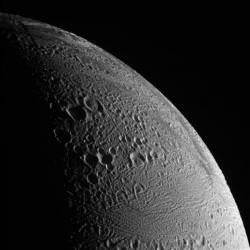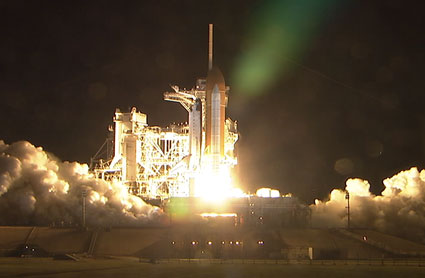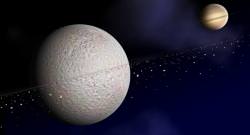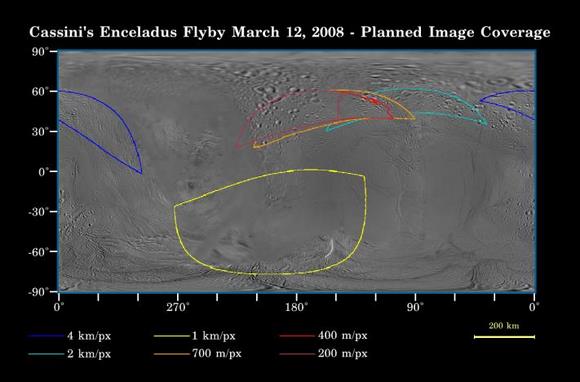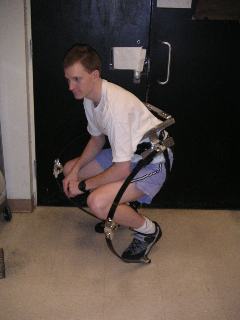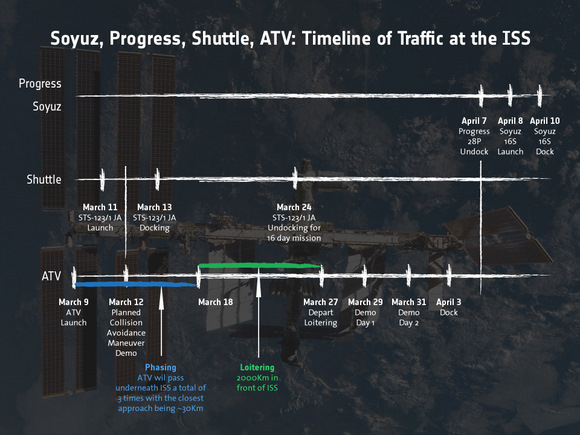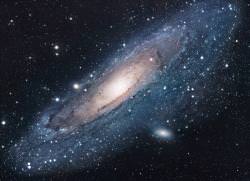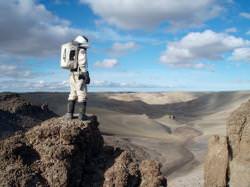Will humans ever really go to Mars? Let’s face it, the obstacles are quite daunting. Not only are there numerous, difficult, technical issues to overcome, but the political will and perseverance of any one nation to undertake such an arduous task just can’t be counted on. However, one former NASA engineer believes a human mission to Mars is quite doable, and such an event would unify the world as never before. But Jim McLane’s proposal includes a couple of major caveats: the trip to Mars should be one-way, and have a crew of only one person.
McLane worked at NASA for 21 years before leaving in 2007 to work for a private engineering firm. Being able to look from afar at NASA’s activities has given him a new perspective, he says.
But McLane was still at NASA when he originally had an idea for a one-way, one-person mission to Mars. He calls his proposal the “Spirit of the Lone Eagle,” in deference to Charles Lindbergh’s solo flight from New York to Paris in 1927.
McLane’s idea came from his acquaintance with a Russian cosmonaut. “I noticed the cosmonaut seemed to be a slightly different type of person than the American astronaut,” McLane said. “Cosmonauts are primarily pilots, and like test pilots, they are very focused on getting the job done. The current American astronauts are picked for things such as their speaking ability and social skills, and most of them have advanced degrees. But the cosmonaut struck me as an adventurous, get-things-done-type person, like our original astronauts back in the 1960’s.”
A return to the “get it done” attitude of the 1960’s and a goal of a manned landing within a short time frame, like Apollo, is the only way we’ll get to Mars, McLane believes. Additionally, a no-return, solo mission solves many of the problems currently facing a round-trip, multiple person crew.
“When we eliminate the need to launch off Mars, we remove the mission’s most daunting obstacle,” said McLane. And because of a small crew size, the spacecraft could be smaller and the need for consumables and supplies would be decreased, making the mission cheaper and less complicated.
While some might classify this as a suicide mission, McLane feels the concept is completely logical.
“There would be tremendous risk, yes,” said McLane, “but I don’t think that’s guaranteed any more than you would say climbing a mountain alone is a suicide mission. People do dangerous things all the time, and this would be something really unique, to go to Mars. I don’t think there would be any shortage of people willing to volunteer for the mission. Lindbergh was someone who was willing to risk everything because it was worth it. I don’t think it will be hard to find another Lindbergh to go to Mars. That will be the easiest part of this whole program.”
And like Apollo, such a mission would stimulate new technology and reinvigorate science. McLane feels a mission to Mars should be international in scope, encompassing contributions from multiple nations to represent a milestone for the whole human race.
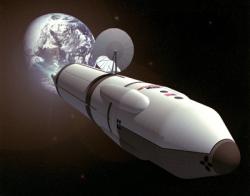
“I think people have forgotten how exciting the Apollo program was, and this would bring that excitement back,” he said. “And it wasn’t just here in the US; the whole world was excited. This enthusiasm would be the greatest effect of a program that places a man on Mars, over and above anything else, whether it makes jobs, or stimulates the economy, or creates technology spinoffs. We’re all humans and the idea of sending one of our kind on a trip like that would be a wonderful adventure for the entire world. The whole world would get behind it.”
And the whole world would be watching, said McLane, so it wouldn’t be as if the lone astronaut would be completely by himself. “You would have constant communication,” he said. “The astronauts on the International Space Station have an army of people on earth keeping track of what they are doing. They really have no peace. Somebody is constantly planning and monitoring their activities. I don’t think being lonely will be much of a problem on a mission to Mars.”
Of course McLane’s hope is the solo astronaut would be joined by others shortly in the future. Orbital mechanics provides a desirable launch window from Earth to Mars every 26 months. “This person wouldn’t be there by himself for very long. It’s just returning home that would be impossible,” he said. Another option McLane has offered is a one-man and one-woman crew, possibly creating an Adam and Eve-type situation.
Unmanned landers would carry living accommodations, supplies and communication equipment to Mars’ surface before the human mission would even launch. The best location on Mars would be a low, sheltered area, perhaps at the bottom of a canyon, which would provide protection from radiation and weather, as well as the highest possible atmospheric pressure.
While technical issues abound for even the simplest human mission to Mars, McLane says technical issues didn’t deter the Apollo program, and they shouldn’t deter a mission to another planet.
“I can remember during the early days of the Apollo program, there were even many more technical issues than we face today in going to Mars,” said McLane. “People don’t realize that, or have forgotten that fact. Several things were tremendous unknowns back then, any one of which could have been a showstopper for a human moon landing.”
McLane said the early designers of the Apollo spacecraft gambled that in 3 or 4 years, high powered transistors and small guidance computers would be developed. That was the only way the spacecraft would be lightweight enough to land on the moon. “It was almost science fiction, but someone thought it could be done in just a few years, and sure enough the technology was perfected in time to make the mission possible,” he said.
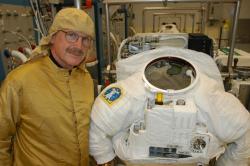
Image: Jim McLane during his career at NASA.
While Apollo 11 astronaut Buzz Aldrin and noted author and physicist Paul Davies have also advocated a one-way trip to Mars, in our risk-averse society most people look askance at such an idea.
Even though explorers in the past traveled, for example, to the south or north pole, knowing they might never return, and thousands of immigrants moved to the US in the 18- and 1900’s, knowing they would never see their homeland again, the human psyche has seemingly changed enough that a one-way ticket off the planet is not acceptable. According to psychologist Molly Dooley from Springfield, IL, it might take a major crisis on Earth for humans to seriously consider such a mission. “Usually it’s the disenfranchised that are willing to take those kinds of risks,” she said. “When our present situation no longer works for us, we become more willing to take risks. The difference between the folks who are interested and those who aren’t is their attachment to their current situation.”
McLane says the main reason NASA hasn’t been able to focus on a human mission to Mars is simple: NASA doesn’t get nearly enough money. “This has been the case for many years,” he said. “They didn’t get enough money to fix problems with the shuttle, and they’ve always been chronically short of money. How we fund NASA is a big handicap, since every year, NASA has to go begging to Congress for funds and justify their budget. The Chinese space program, on the other hand, has an advantage in that they budget their projects in five-year increments. If we really want to go somewhere, we’ll have to change how NASA gets its money.”
But McLane thinks NASA is at fault for not even considering a one-way mission to Mars. “For over forty years they’ve studied all sorts of options, but haven’t admitted to ever looking at a one-way mission to Mars,” he said. “We shouldn’t be stuck on this rock forever. I believe it’s in our human nature to try to go somewhere else, and we’ve almost worn this world out. I think now is the time to reach out and go somewhere else to start with a clean slate. There is no reason not to try.”

